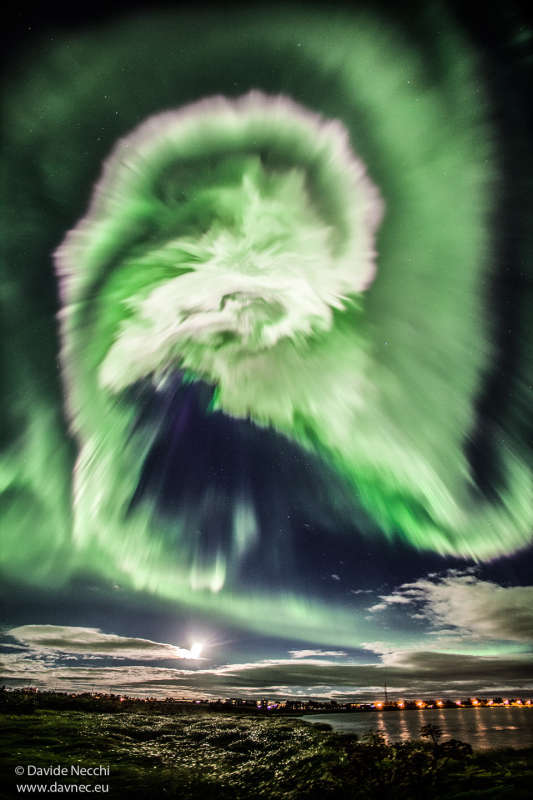
|
Credit & Copyright: Davide Necchi
Explanation:
What's happened to the sky?
Aurora!
Captured late last month, this
aurora was noted by
Icelanders for its great brightness
and quick development.
The aurora resulted from a solar storm,
with high energy particles bursting out from the Sun and through a
crack in Earth's protective
magnetosphere
a few days later.
Although a spiral pattern can be discerned,
creative humans might imagine the complex glow as an atmospheric
apparition of any number
of
common
icons.
In the foreground of the featured image is the
Šlfus└ River,
while the lights illuminate a bridge in
Selfoss City.
Just beyond the low clouds is a nearly full Moon.
The liveliness of the Sun -- and the
resulting auroras on Earth -- is slowly diminishing as
the Sun emerges from a
Solar maximum
of surface activity and
evolves towards
a historically more quite period in its 11-year cycle.
In fact, solar astronomers are
waiting to
see if the
coming
Solar
minimum will be as unusually quiet as the
last one, where sometimes months would go by with
no discernible sunspots or other active solar phenomena.
Follow APOD on:
Facebook,
Google Plus,
or
Twitter
|
January February March April May June July August September October November December |
| ||||||||||||||||||||||||||||||||||||||||||||||||
NASA Web Site Statements, Warnings, and Disclaimers
NASA Official: Jay Norris. Specific rights apply.
A service of: LHEA at NASA / GSFC
& Michigan Tech. U.
Based on Astronomy Picture
Of the Day
Publications with keywords: aurora
Publications with words: aurora
See also:
- APOD: 2025 January 7 ┴ A New Years Aurora and SAR Arc
- APOD: 2024 December 8 ┴ Aurora around Saturns North Pole
- APOD: 2024 October 16 ┴ Colorful Aurora over New Zealand
- APOD: 2024 October 13 ┴ Aurora Timelapse Over Italian Alps
- Northern Lights, West Virginia
- Aurora Australis and the International Space Station
- APOD: 2024 June 26 ┴ Timelapse: Aurora, SAR, and the Milky Way
